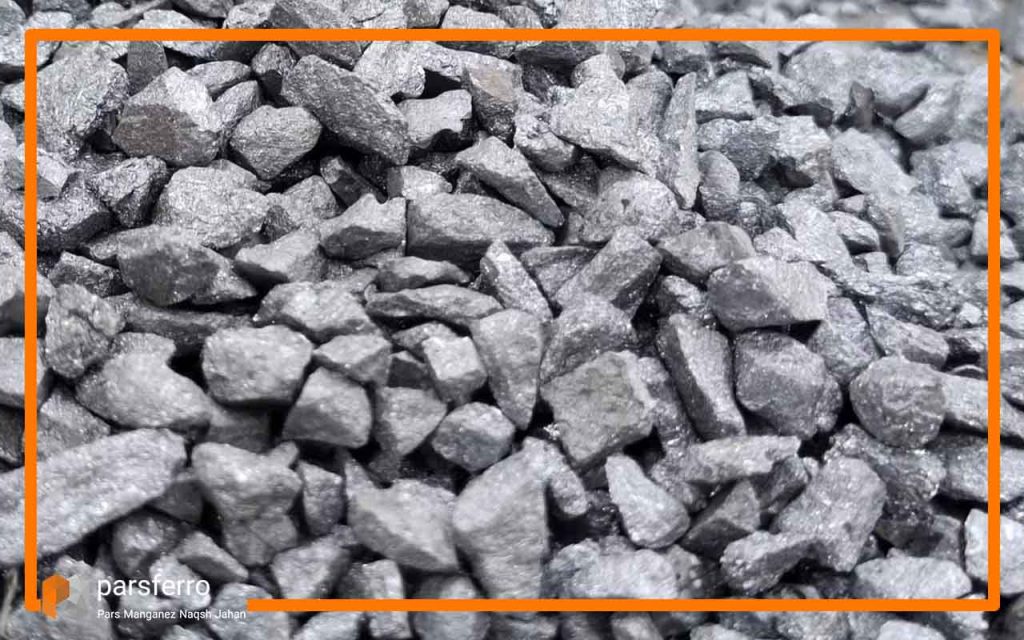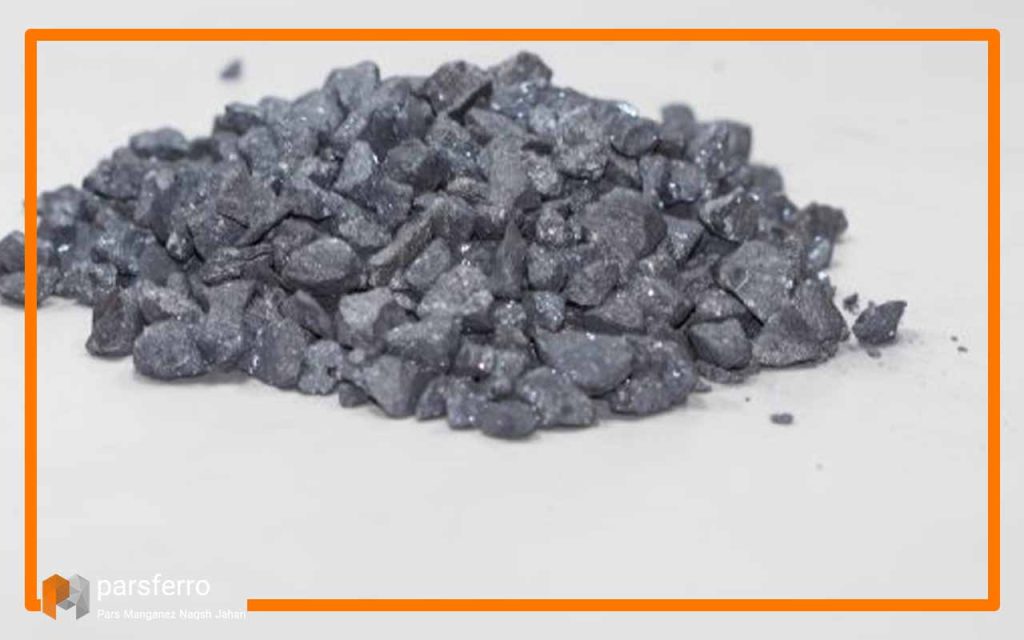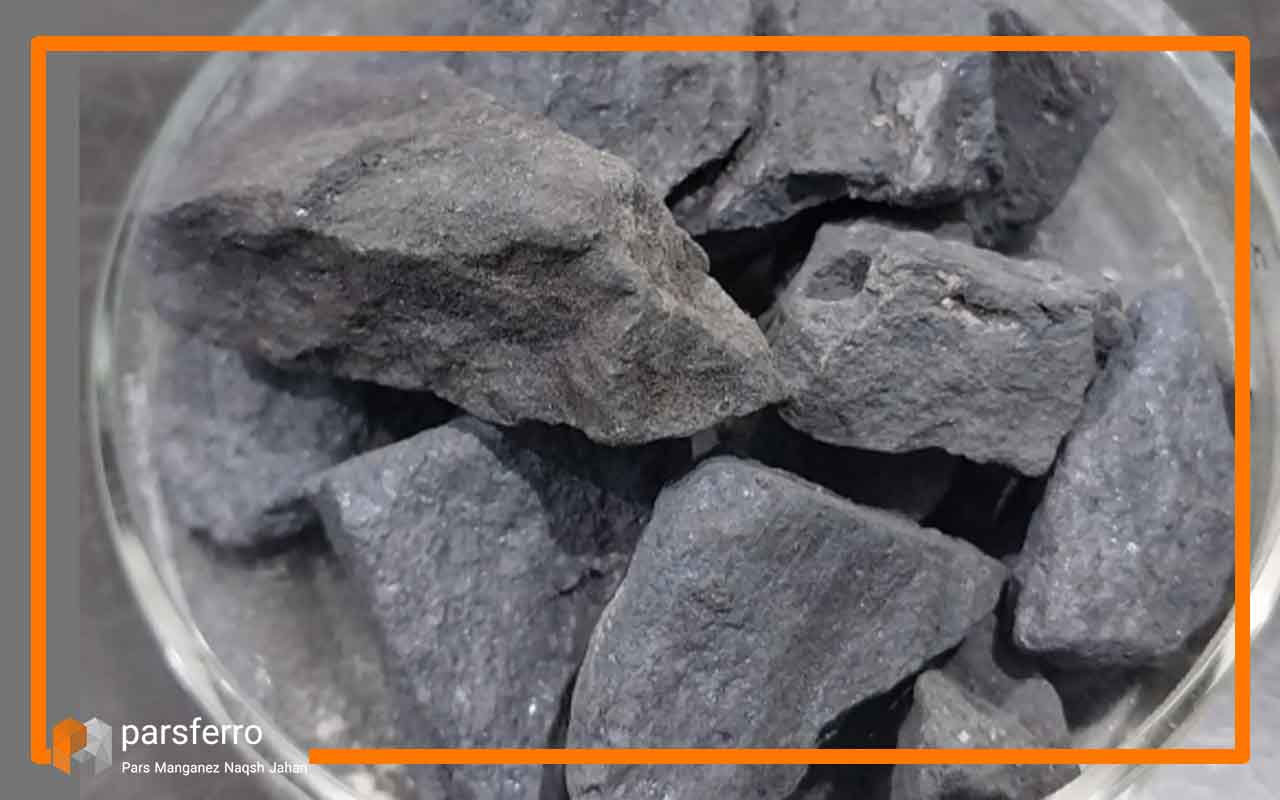Ferro silicon magnesium (FeSiMg) is an alloy used in the production of nodular or ductile iron. The ferro silicon magnesium composition can vary slightly depending on the specific requirements of the application, but a common composition typically includes 40-50% silicon (Si), 4-15% magnesium (Mg), balance iron (Fe), 1.5-3% calcium(Ca), 1% max aluminium (Al) and 0.5-20% TRE. The exact composition may be specified by producers or customers based on the desired properties of the final alloy.
Pars Manganez Naqsh Jahan stands at the forefront of the ferroalloy industry, recognized as a premier producer specializing in key alloys for the continuous progress and improvement of the steel industry. With a commitment to delivering high quality alloys, the company plays a key role in supplying essential raw materials for the steel industry. Pars Manganez is not confined to serving the domestic steel market alone; it extends its influence on a global scale by supplying high-quality ferroalloys to steel manufacturers worldwide.
ferro silicon magnesium chemical composition
ferro silicon magnesium composition can vary depending on the specific grade and application. Here’s a breakdown of the typical chemical composition:
- Silicon (Si): Silicon is the primary element in ferro silicon magnesium, and it contributes to the deoxidation of molten iron and the formation of graphite nodules in ductile iron. The silicon content is typically in the range of 40% to 60%.
- Magnesium (Mg): Magnesium is added to promote the formation of nodular graphite, which gives ductile iron its desirable mechanical properties. The magnesium content in ferro silicon magnesium is usually in the range of 4% to 15%.
- Iron (Fe): Iron is the base metal in the alloy, and its content is typically balance. The exact percentage depends on the specific alloy and its intended application.
- calcium (Ca), aluminum (Al): These elements are sometimes included in the composition to achieve certain properties. Calcium, for example, can contribute to graphitic nucleation. The exact content of calcium and aluminum will depend on the specific alloy formulation.
- transition rare earth elements (TRE): these elements, such as titanium, manganese, and others, are sometimes added to improve the alloy’s performance. They can contribute to nodularization and modify the shape and distribution of graphite nodules. The content of rare earth elements can vary, and specific formulations may include them in the range of 0.5% to 20% or even higher.

It’s important to note that different grades of ferro silicon magnesium may have variations in composition to meet specific requirements. Additionally, the production process and the choice of raw materials can also influence the final composition of the alloy. If you have a specific application or grade in mind, it’s recommended to refer to the specifications provided by the manufacturer or supplier for precise composition details. The following table shows the ferro silicon magnesium composition:
Table1. ferro silicon magnesium composition
| Elements in ferro silicon magnesium composition | Content |
| Magnesium | of 4% to 15% |
| Silicon | 40% to 60% |
| Iron (Fe) | balance |
| Calcium | 1.5-3% |
| Aluminum | 1% max |
| transition rare earth elements | 0.5% to 20% |
key roles of ferro silicon magnesium composition
Ferro silicon magnesium is an alloy used in the production of nodular or ductile iron, which is a type of iron that exhibits improved strength, toughness, and ductility compared to gray iron. The addition of magnesium to the alloy promotes the formation of graphite nodules in the iron matrix, giving it enhanced mechanical properties. Here are the key roles of ferro silicon magnesium composition in alloy production:
- Nodularization: The primary purpose of adding ferro silicon magnesium to iron is to induce nodularization. Nodular iron has graphite nodules dispersed throughout the metal matrix, which imparts ductility and toughness to the material. This is in contrast to gray iron, which has a flake graphite structure that makes it more brittle.
- Graphite Formation: The magnesium in ferro silicon magnesium reacts with oxygen and sulfur in the molten iron to form magnesium oxide (MgO) and magnesium sulfide (MgS). These compounds act as nucleation sites for graphite, encouraging the growth of nodules rather than flakes. The spherical graphite nodules enhance the mechanical properties of the iron.
- Improvement of Mechanical Properties: Nodular iron produced with ferro silicon magnesium exhibits improved mechanical properties such as increased tensile strength, elongation, and impact resistance. This makes the alloy suitable for a wide range of applications where strength and ductility are critical, such as in automotive components, pipes, and other structural elements.
- Reduced Shrinkage and Porosity: The nodularization process helps reduce shrinkage and porosity in the cast iron, leading to a more uniform and sound casting. This is particularly important in applications where the material needs to withstand pressure, as nodular iron has better fluidity and lower shrinkage than gray iron.
- Control of Microstructure: Ferro silicon magnesium allows for better control over the microstructure of the iron, ensuring a more consistent and desirable material. This control is essential for meeting specific mechanical property requirements in different applications.

In summary, ferro silicon magnesium plays a crucial role in the production of nodular iron, providing the necessary conditions for the formation of graphite nodules that enhance the mechanical properties of the alloy. This nodular iron is widely used in industries where a combination of strength, ductility, toughness, and other desirable mechanical properties is required.
Conclusion
In conclusion, Ferro Silicon Magnesium serves as an alloy in the production of nodular or ductile iron, contributing to the enhancement of mechanical properties crucial for diverse industrial applications. With a typical composition including silicon, magnesium, iron, calcium, aluminum, and transition rare earth elements, FeSiMg induces nodularization and promotes the formation of graphite nodules in the iron matrix. ferro silicon magnesium composition may exhibit slight variations based on specific application requirements. However, a standard composition often consists of approximately 40-50% silicon (Si), 4-15% magnesium (Mg), with the remaining balance being iron (Fe). Additionally, it typically contains 1.5-3% calcium (Ca), a maximum of 1% aluminum (Al), and 0.5-20% transition rare earth elements (TRE). This alloy’s formulation can be tailored to meet specific needs, reflecting its versatility in addressing diverse industrial applications.


No comment